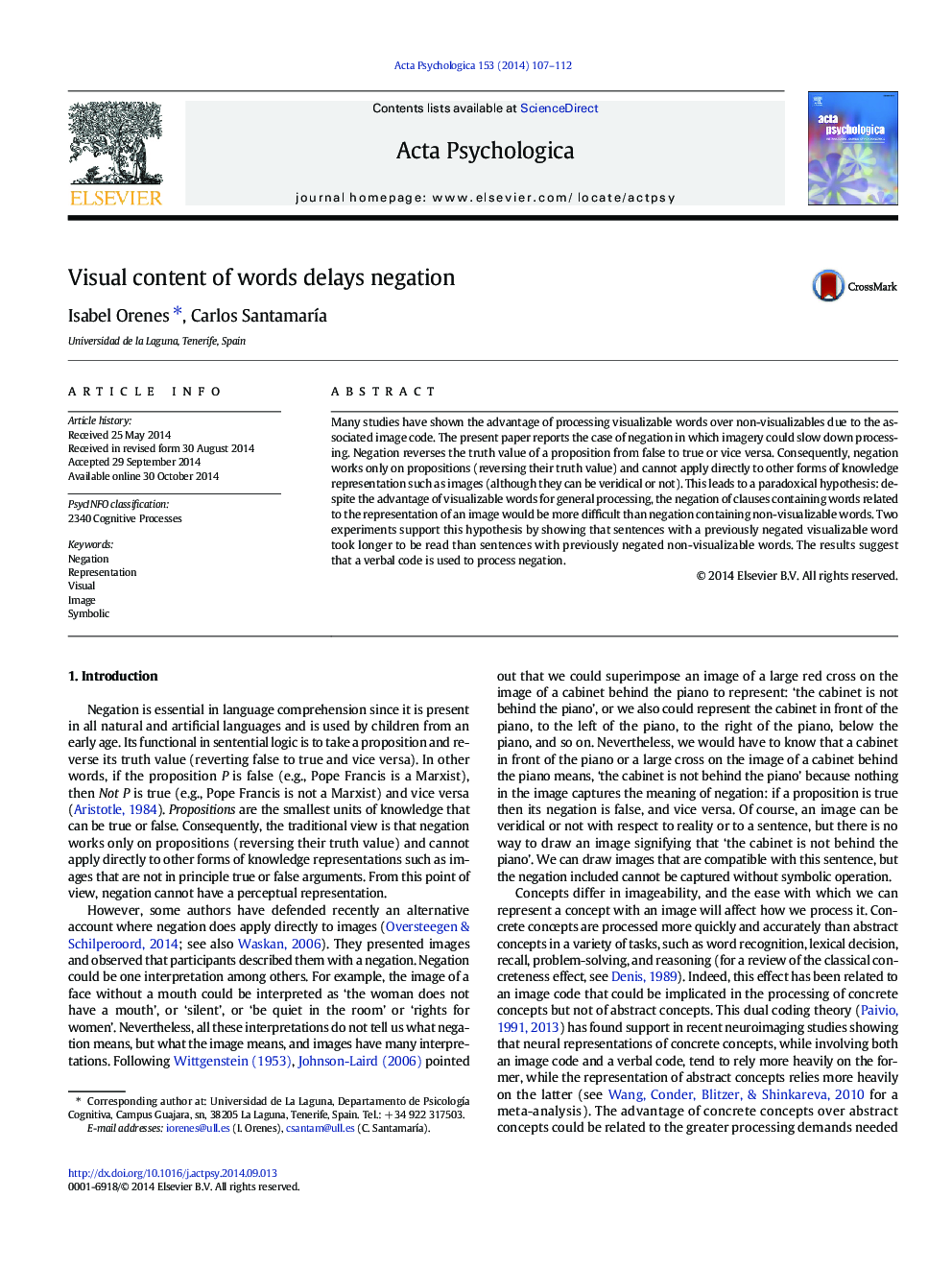| Article ID | Journal | Published Year | Pages | File Type |
|---|---|---|---|---|
| 919769 | Acta Psychologica | 2014 | 6 Pages |
•The usual pattern of visualizable words being easier to process than non-visualizable words is reversed by using negation.•In a conjunction of a visualizable and a non-visualizable word, processing is slower when the visualizable word was negated.•Negation of visualizable words took longer to be read than negation of non-visualizable words.•This finding indicates that visualizable words could not be directly negated in a perceptual way.•Also, the results suggest that a symbolic code is used to process negation.
Many studies have shown the advantage of processing visualizable words over non-visualizables due to the associated image code. The present paper reports the case of negation in which imagery could slow down processing. Negation reverses the truth value of a proposition from false to true or vice versa. Consequently, negation works only on propositions (reversing their truth value) and cannot apply directly to other forms of knowledge representation such as images (although they can be veridical or not). This leads to a paradoxical hypothesis: despite the advantage of visualizable words for general processing, the negation of clauses containing words related to the representation of an image would be more difficult than negation containing non-visualizable words. Two experiments support this hypothesis by showing that sentences with a previously negated visualizable word took longer to be read than sentences with previously negated non-visualizable words. The results suggest that a verbal code is used to process negation.
